Urban Island
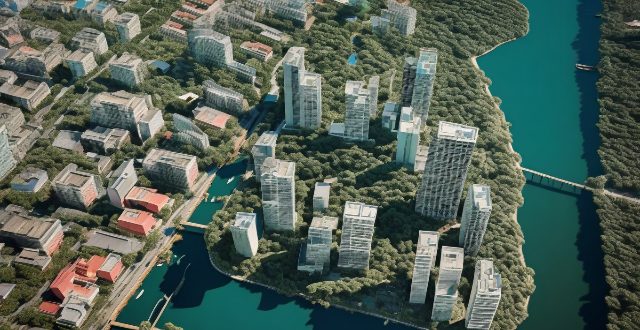
How do climate adaptation strategies differ between rural and urban areas ?
Climate adaptation strategies differ between rural and urban areas due to infrastructure, resources, community needs, and environmental impacts. Urban areas often have advanced technology and diverse stakeholders involved in adaptation planning, while rural areas rely more on local knowledge and community-based initiatives. Funding and resources are also key factors, with urban areas having better access to funding for large-scale projects and a diversified economy to support climate adaptation measures. In contrast, rural areas may have limited financial resources and dependence on agriculture, making them vulnerable to climate impacts. Community participation is crucial in both settings, but urban areas may have more platforms for participatory planning and decision-making processes, while rural areas benefit from strong community cohesion and collective action. Environmental impact considerations also vary, with urban areas facing challenges like the heat island effect and air pollution, while rural areas focus on natural resource management and watershed protection.
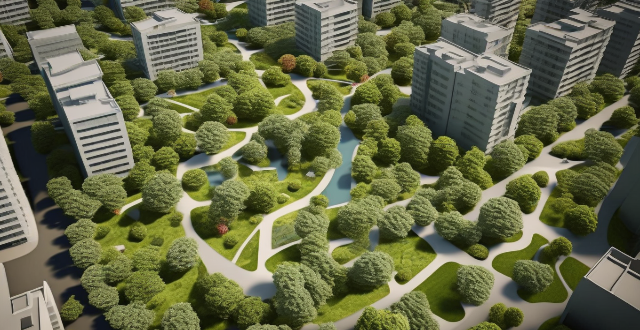
How can urban green spaces improve residents' quality of life ?
Urban green spaces, including parks and community gardens, play a key role in enhancing the quality of life for city residents by providing physical, mental, social, and environmental benefits. Physical health is improved through increased physical activity, better air quality, and mitigation of the heat island effect. Mental health benefits include stress reduction, enhanced mood, and improved cognitive function. Social well-being is boosted through community building, recreational opportunities, and educational value. Environmentally, urban green spaces contribute to biodiversity conservation, water management, and carbon sequestration. These areas are essential for comprehensive wellness in urban environments and should be a focus in future city planning.

How do urban greening projects influence city temperatures and heat islands ?
Urban greening projects, such as planting trees and creating parks, can help reduce city temperatures and mitigate the effects of urban heat islands. These projects provide shade, reduce heat absorption by buildings and roads, and promote evapotranspiration, all of which contribute to cooler city environments. By increasing vegetation in cities, urban greening initiatives can also help reduce the intensity of urban heat islands, making cities more comfortable for residents. As our world continues to urbanize, prioritizing urban greening initiatives is essential for creating healthier and more sustainable cities for future generations.

What are the benefits of urban greening projects ?
Urban greening projects offer a multitude of benefits including improved air quality, climate regulation, water management, enhanced aesthetics and livability, mental and physical health improvements, community building, habitat creation and preservation, food production, job creation, energy conservation, and tourism attraction. These initiatives aim to increase the amount of greenery in cities, such as parks, gardens, green roofs, walls, street trees, and other forms of urban forestry. The advantages of urban greening are multifaceted and contribute significantly to the improvement of urban environments for both residents and wildlife.

How do urban greening projects affect biodiversity in cities ?
Urban greening projects, which aim to increase the amount of vegetation within cities, can have significant effects on urban biodiversity. These projects typically involve planting trees, creating parks and green spaces, and restoring natural habitats. Here are some ways in which these initiatives can influence the variety of species living in urban areas: - Increased Habitat Availability: By adding more greenery, urban greening provides additional habitats for a wide range of organisms. This includes plants, insects, birds, and small mammals that can thrive in these newly created environments. - Mitigation of Urban Heat Islands: Vegetation helps reduce the urban heat island effect by providing shade and releasing water through transpiration, creating cooler microclimates that are more suitable for certain species. - Enhanced Food Sources: Flowering plants attract pollinators like bees and butterflies, supporting their populations and contributing to the health of the overall ecosystem. - Increased Water Quality and Availability: Green roofs and rain gardens help manage stormwater runoff, reducing pollution and providing water sources for urban wildlife. - Promotion of Biodiversity through Education and Awareness: Parks and green spaces serve as outdoor classrooms, offering opportunities for education about ecology and conservation. While urban greening projects offer numerous benefits for biodiversity, they also present challenges such as potential introduction of invasive species, maintenance requirements, and resource allocation trade-offs with other land uses.
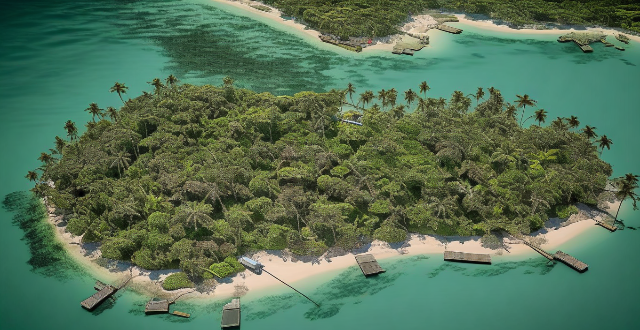
What are some hidden gem island destinations ?
This text highlights several hidden gem island destinations that offer unique experiences and natural beauty without the crowds of more popular tourist spots. The islands discussed include Komodo Island in Indonesia, Nevis in the Caribbean, La Digue in Seychelles, Fjordland in Norway, and Lifou Island in New Caledonia. Each destination provides its own distinct attractions, from diving with marine life and hiking through tropical forests to exploring majestic fjords and experiencing local culture. These islands are perfect for travelers seeking a tranquil escape into nature's splendor and rich cultural heritage.
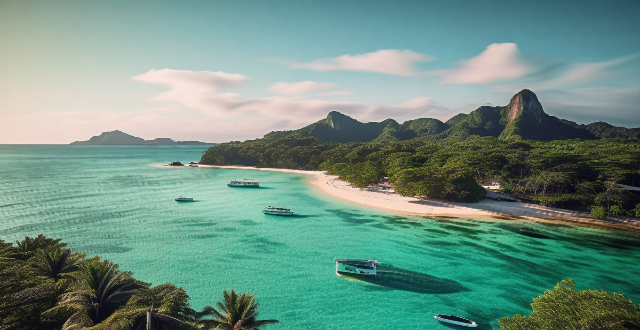
Which tropical island is considered the best for a romantic honeymoon ?
When it comes to choosing the perfect tropical island for a romantic honeymoon, some of the most popular options include Maldives, Bora Bora, Hawaii, and Santorini. Ultimately, the best island depends on personal preferences and budget, as each destination offers unique experiences that can create lasting memories for newlyweds.
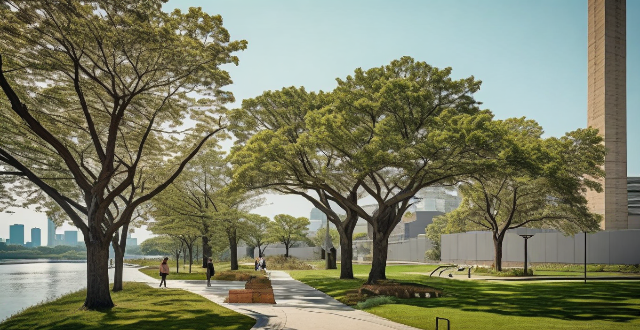
What is the importance of tree cover in urban areas ?
The text discusses the importance of tree cover in urban areas for environmental, social, and economic benefits. It highlights the role of trees in improving air quality, regulating climate, managing water, enhancing aesthetic value, building communities, reducing noise pollution, increasing property values, conserving energy, and attracting tourism. The text also suggests ways to promote tree cover in urban areas through planting initiatives, maintenance and protection, and education and awareness campaigns.
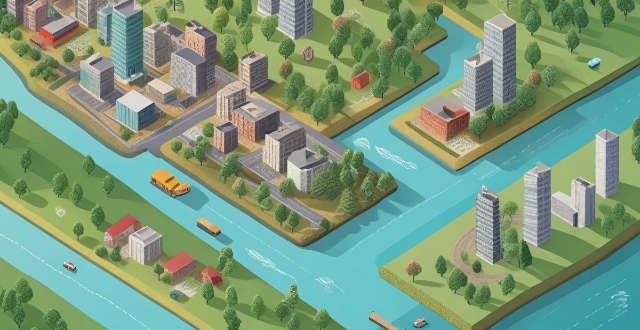
How do changes in precipitation patterns influence urban drainage and water management systems ?
Changes in precipitation patterns, often linked to climate change, have significant implications for urban drainage and water management systems. These alterations can lead to increased frequency and intensity of storm events, which places a strain on existing infrastructure and necessitates adaptation strategies. Key considerations include increased storm intensity and frequency, the urban heat island effect, runoff management, water quality concerns, and ecosystem impacts. Strategies for adaptation include green infrastructure, rainwater harvesting, decentralized water management, stormwater regulations, integrated water resource management, smart technology, community engagement, and sustainable drainage systems. The shifts in precipitation patterns demand a comprehensive approach to urban drainage and water management that emphasizes resiliency, sustainability, and adaptability. By integrating innovative technologies, green infrastructure, and community participation, cities can better cope with these changes and safeguard their environments and populations from the adverse effects of extreme weather events.
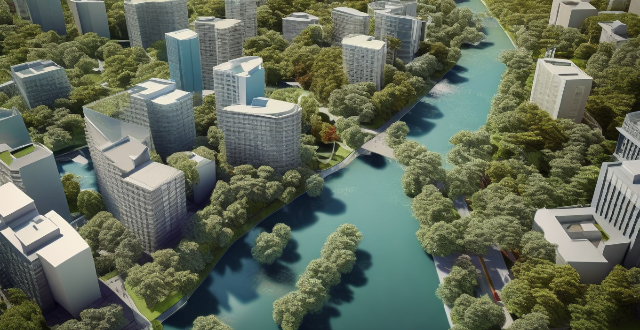
What is the significance of green infrastructure in managing urban runoff and improving water quality ?
Green infrastructure (GI) is a sustainable approach that uses natural processes to manage stormwater, reduce pollution, and enhance the overall health of urban ecosystems. It plays a crucial role in managing urban runoff and improving water quality. Some benefits of GI include reducing stormwater runoff, improving water quality, enhancing habitat and biodiversity, and mitigating climate change impacts. To effectively implement green infrastructure in urban areas, factors such as site selection, design considerations, and maintenance and management should be considered. Proper maintenance and management are essential for ensuring the long-term success of green infrastructure projects. By implementing effective green infrastructure practices, cities can create healthier, more resilient environments for both people and wildlife.
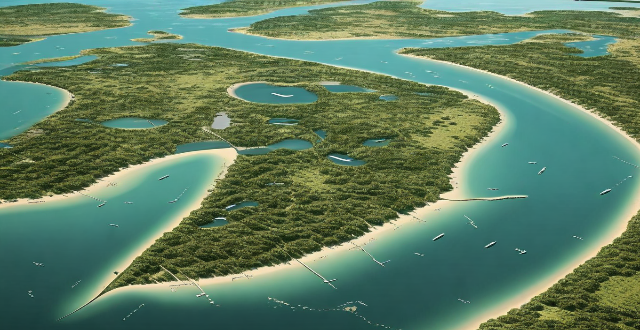
What challenges do small island states face in climate governance ?
Small island states face challenges in climate governance due to limited resources, vulnerability to climate change impacts, lack of representation in international negotiations, dependence on fossil fuels and tourism, and limited access to technology. Addressing these challenges requires collaboration between small island states, regional neighbors, and the international community.
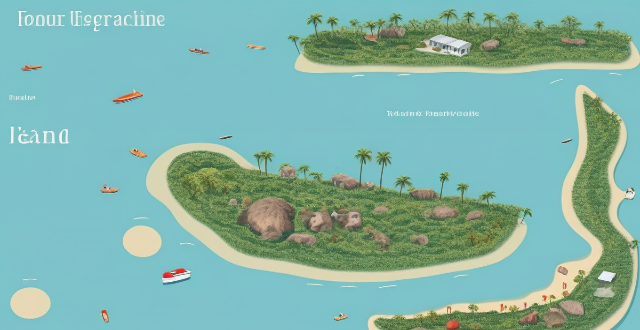
How can small island nations develop successful climate adaptation plans ?
The text provides a comprehensive guide on how small island nations can develop successful climate adaptation plans to protect their communities and ecosystems from the impacts of climate change, which include sea-level rise, storm surges, and extreme weather events. The suggested steps are grouped into several categories: assessing risks and prioritizing actions; building resilience through infrastructure; enhancing ecosystem resilience; community engagement and education; developing policies and legislation; finance and funding mechanisms; and monitoring and evaluation. Each category offers specific strategies and actions that small island nations can take to create effective climate adaptation plans.
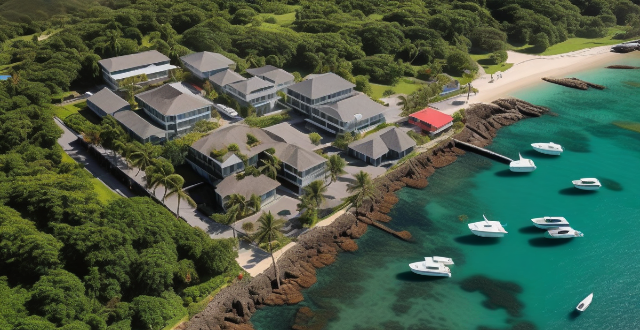
How do I choose the perfect island resort for my needs ?
When searching for the ideal island resort, consider yourWhen searching for the ideal island resort, consider your, desired amenities, and seek consider your budget, interests, location, desired amenities, and seek out reviews and recommendations. Look for deals to ensure you find a resort that meets your needs and preferences while staying within your financial means.
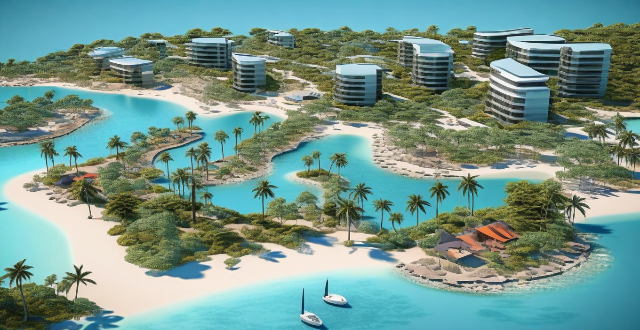
What are the top luxury island experiences for a honeymoon or anniversary trip ?
Top Luxury Island Experiences for a Honeymoon or Anniversary Trip include Bora Bora in French Polynesia, Santorini in Greece, the Maldives, Mauritius, and Necker Island in the British Virgin Islands. Each destination offers unique experiences such as crystal clear waters, luxury overwater bungalows, sunset cruises, iconic caldera views, private catamaran excursions, indulgent spa treatments, secluded beaches, underwater dining, world-class diving, tropical forests and waterfalls, sailing and watersports, cultural exploration, exclusive private island experiences, world-class facilities, and personalized service. These islands provide the perfect setting for a romantic and adventurous honeymoon or anniversary trip filled with relaxation and unforgettable memories.

What are the must-try foods and drinks in island destinations ?
When traveling to island destinations, it's essential to try the local cuisine and beverages. Here are some must-try foods and drinks in popular island destinations: In Hawaii, you can enjoy a poke bowl made with diced raw fish served over rice and topped with various vegetables and sauces. Shaved ice is a refreshing treat that can be found all over the islands. A Mai Tai is a classic cocktail made with rum, lime juice, orgeat syrup, and curaçao. In the Caribbean, jerk chicken is a spicy grilled chicken dish that originated in Jamaica. Rum punch is a popular drink made with rum, fruit juices, and spices. Conch fritters are a Bahamian specialty made from chopped conch meat mixed with flour, eggs, onions, and spices. In Bali, Indonesia, you can enjoy nasi goreng, an Indonesian fried rice dish often served as breakfast or lunch. Es campur is a refreshing dessert made with shaved ice, coconut milk, syrups, jellies, and various fruit toppings. Bintang beer is an Indonesian pilsner beer widely available throughout Bali.
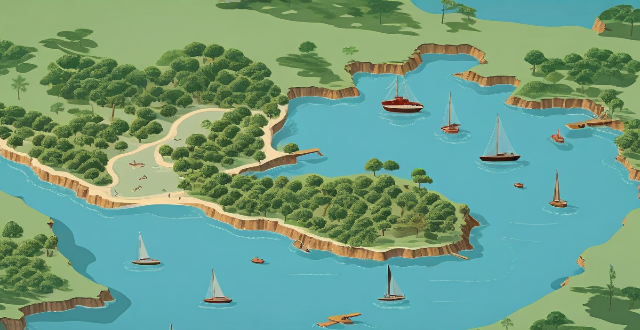
How are small island nations particularly vulnerable to the effects of climate change ?
Small island nations are uniquely susceptible to climate change due to their geographical, environmental, and socio-economic traits. Limited land area and low elevation make them prone to inundation and flooding. Coral reef degradation and biodiversity threats further exacerbate these vulnerabilities. Economically, the tourism industry and fisheries are at risk, while human displacement and migration become pressing issues. Adaptation and resilience challenges include limited resources and a heavy reliance on international support. Addressing these challenges requires global cooperation and targeted strategies.
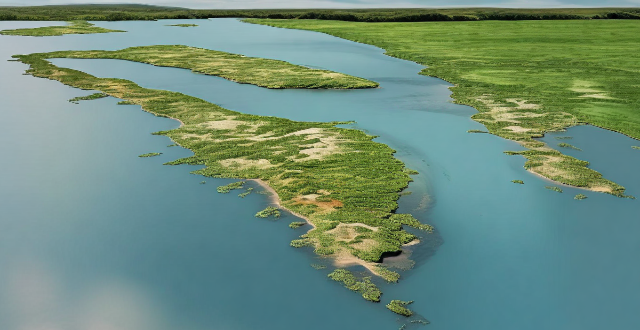
What are the main challenges faced by small island states in the context of global climate governance ?
Small island states face several challenges in the context of global climate governance, including limited resources, high vulnerability to climate impacts, limited influence in global climate governance, dependence on international support, limited capacity for research and data collection, and socio-economic challenges. Addressing these challenges requires a collaborative effort between small island states, developed countries, and international institutions.

What are the best times of year to visit popular island destinations ?
Visiting popular island destinations can be a dream come true for many travelers. However, the experience can vary greatly depending on the time of year you choose to go. Here are some tips on the best times to visit popular island destinations: ## **Hawaii** - ### **Best Time to Visit** The best time to visit Hawaii is during the summer months (June to August) when the weather is warm and sunny. This is also the peak season, so expect higher prices and larger crowds. - ### **Things to Do** During your visit, don't miss out on hiking to Diamond Head State Monument, visiting Pearl Harbor National Memorial, or taking a surfing lesson at Waikiki Beach. - ### **What to Pack** Pack light and comfortable clothing, sunscreen, sunglasses, and a hat. Don't forget your swimsuit and flip flops too! ## **Maldives** - ### **Best Time to Visit** The best time to visit the Maldives is from December to April when it's dry season and the weather is sunny and warm. - ### **Things to Do** While in the Maldives, make sure to go snorkeling or diving in the crystal-clear waters, relax on one of the many beautiful beaches, or take a boat trip to explore the nearby islands. - ### **What to Pack** Pack light and airy clothes, sunscreen, sunglasses, and a hat. Don't forget your swimsuit and flip flops too! ## **Bali (Indonesia)** - ### **Best Time to Visit** The best time to visit Bali is between May and September when it's dry season and the weather is sunny and warm. - ### **Things to Do** While in Bali, make sure to visit the Tegalalang Rice Terrace, watch a traditional Balinese dance performance, or take a surfing lesson at Kuta Beach. - ### **What to Pack** Pack light and comfortable clothing, sunscreen, sunglasses, and a hat. Don't forget your swimsuit and flip flops too!
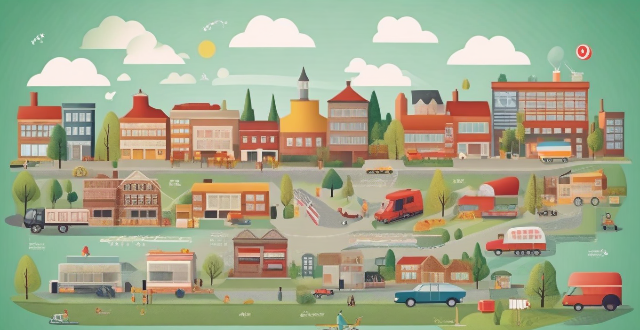
How can urban planning and design contribute to enhancing urban food security under changing climatic conditions ?
The text discusses the importance of urban planning and design in enhancing food security in cities, especially under changing climatic conditions. It outlines key strategies such as promoting urban agriculture, sustainable land use planning, improving access to healthy food options, supporting local food production and consumption, and fostering innovation and collaboration. These strategies aim to create resilient and self-sufficient urban environments that can adapt to climate change while ensuring food security for all residents.

What safety precautions should I take when cycling on urban routes ?
Cycling in urban areas can be a fun and efficient way to get around, but it's important to prioritize safety. Here are some key precautions to take when cycling on urban routes: 1. Wear a Helmet 2. Use Proper Lighting 3. Follow Traffic Laws 4. Be Predictable 5. Stay Alert 6. Choose the Right Route 7. Wear Reflective Clothing 8. Keep Your Bike Maintained
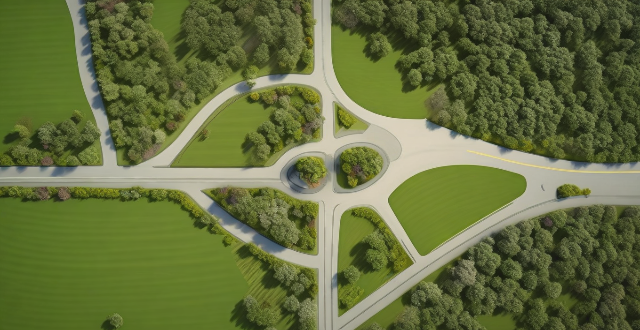
How can ecological protection areas be used as models for urban and peri-urban green spaces ?
Ecological protection areas serve as models for urban and peri-urban green spaces by emphasizing biodiversity, habitat preservation, and educational opportunities. Urban planners can apply EPA principles in designing green spaces that use native plants, natural landscapes, and green infrastructure to mimic ecological diversity. These areas should also promote biodiversity through wildlife corridors and nesting sites, engage communities with educational signage and programs, and foster partnerships with schools.

How do climate predictions inform urban planning and development ?
Climate predictions are critical for urban planning and development, as they provide insights into the potential impacts of climate change on cities. This allows planners and developers to make informed decisions about infrastructure, land use, and resource management. The impact of climate change on cities includes sea level rise, extreme weather events, and air quality issues. To address these challenges, urban planning and development must focus on resilience and adaptation, mitigation strategies, and public health and well-being. Resilience and adaptation involve building resilient infrastructure, avoiding development in areas prone to climate-related hazards, and implementing green spaces to mitigate the effects of climate change. Mitigation strategies include promoting energy-efficient buildings and transportation systems, incorporating renewable energy sources, and developing technologies to capture carbon dioxide emissions. Public health and well-being can be addressed by reducing the urban heat island effect, improving air quality through regulations and clean transportation options, and ensuring access to safe drinking water. By considering climate predictions in urban planning and development, cities can become more resilient, adaptable, and sustainable in the face of a changing climate.
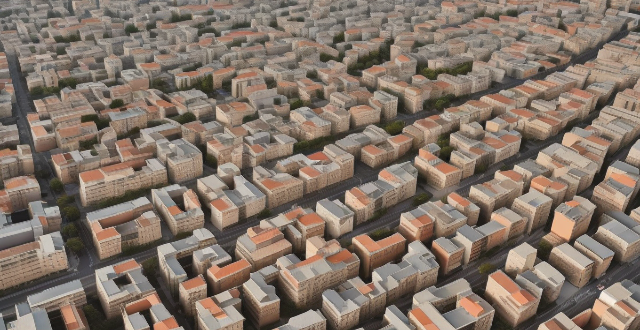
What are the top 10 cities for urban photography ?
The article provides a list of the top 10 cities for urban photography, each with its unique charm and photo opportunities. The cities include New York City, Tokyo, Paris, London, Hong Kong, Berlin, Istanbul, Chicago, Rio de Janeiro, and Melbourne. Each city is described in terms of its iconic landmarks, cultural diversity, natural beauty, historical contrasts, and architectural wonders. The article concludes that these cities offer a unique blend of urban elements that cater to various photography interests, making them ideal destinations for any urban photographer looking for their next great shot.

How can Climate-Smart Technologies be implemented in urban planning ?
The text discusses the importance of climate-smart technologies in urban planning. It outlines various ways these technologies can be integrated into urban planning, including sustainable transportation systems, green building design, urban heat island mitigation, energy efficiency and renewable energy, water management, and community engagement and education. The text emphasizes that adopting these strategies can make cities more resilient to climate change while improving the quality of life for their residents.
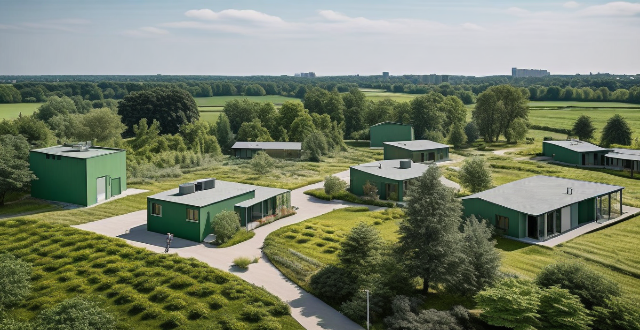
What are the economic benefits associated with urban green spaces ?
Urban green spaces provide economic benefits to cities, including increased property values, reduced air pollution, and enhanced tourism. These spaces improve the living environment, leading to higher home and rental prices, increased tax revenue, and healthcare cost savings. Additionally, they attract tourists, boosting the local economy through job creation and multiplier effects. Investing in urban green spaces is beneficial for both the environment and city prosperity.
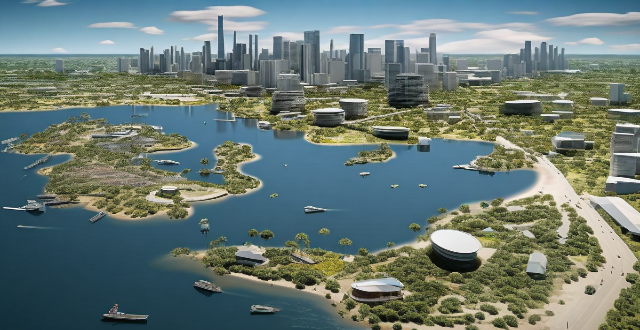
In what ways do urban heat islands influence city planning and design ?
Urban heat islands, areas within cities that are significantly warmer than surrounding rural areas, have a significant impact on city planning and design. This phenomenon is primarily due to the concentration of buildings, pavements, and other infrastructure that absorb and retain heat. The impact of urban heat islands extends beyond just temperature differences, influencing various aspects of city planning and design. These include increased energy consumption, public health concerns, water management, green spaces and landscaping, transportation planning, building materials and construction techniques, community design and zoning, climate change adaptation, and public awareness and education. Addressing these challenges requires a multifaceted approach that considers energy efficiency, public health, water management, green spaces, transportation, building materials, community design, climate change adaptation, and public awareness. By taking these factors into account, cities can become more livable, sustainable, and resilient in the face of rising temperatures.
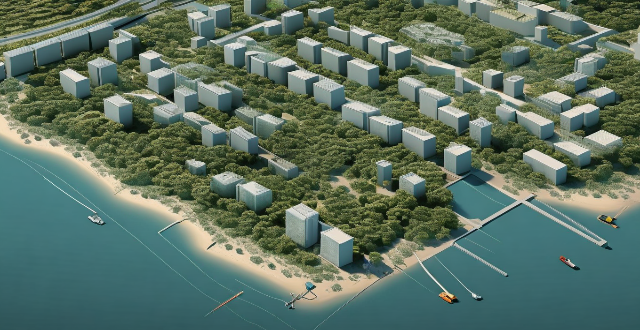
How can climate change impact urban planning ?
The article discusses the impact of climate change on urban planning, highlighting increased extreme weather events, sea level rise, urban heat islands, and energy efficiency as key challenges. It suggests measures such as elevated building standards, improved drainage systems, green infrastructure, coastal protection measures, sustainable water management practices, green roofs and walls, cool pavements, tree planting programs, energy-efficient building design, renewable energy sources, and efficient public transportation systems to mitigate these effects. The article emphasizes the importance of considering climate change in urban planning to create resilient cities and contribute to a sustainable future.

What are the most romantic honeymoon spots in Australia ?
Australia offers diverse romantic honeymoon destinations ranging from underwater paradises to cosmopolitan cities. The Great Barrier Reef provides snorkeling and scuba diving adventures, while the Blue Mountains offer serenity amidst waterfalls and hiking trails. Tasmania's wilderness is perfect for nature lovers, and Kangaroo Island allows close encounters with native wildlife. The Whitsunday Islands boast tropical beauty, Melbourne offers a vibrant arts scene, and the Barossa Valley is ideal for wine enthusiasts. Each spot caters to different interests, ensuring an unforgettable honeymoon experience.

How does urban vegetation impact air pollution levels ?
Urban vegetation, including trees, shrubs, and grasses in urban areas, plays a crucial role in mitigating air pollution. It improves air quality by reducing pollutants such as carbon dioxide (CO2), nitrogen oxides (NOx), and particulate matter (PM). Plants absorb CO2 from the atmosphere during photosynthesis, which helps to reduce the concentration of this primary greenhouse gas contributing to global warming. Trees also store carbon in their biomass, effectively removing it from the atmosphere through a process known as carbon sequestration. The large leaf surface area of urban vegetation helps to capture and reduce nitrogen oxides (NOx) in the air. When NOx comes into contact with plant leaves, it reacts with the stomata to form nitrates, which are then absorbed by the plant. Soil microorganisms play a vital role in breaking down organic matter and converting it into nutrients that plants can use. These microorganisms also help to reduce NOx levels by converting them into harmless compounds such as nitrogen gas. Urban vegetation can trap particulate matter (PM) through its leaves and bark, preventing it from being inhaled by humans and animals. This helps to reduce the health risks associated with PM exposure, such as respiratory problems and cardiovascular diseases. Trees act as wind breaks, reducing wind speed and preventing PM from becoming airborne, which helps to keep PM levels low in urban areas and improve overall air quality. In conclusion, promoting urban green spaces and encouraging the planting of more trees and shrubs in cities is essential to mitigate the negative effects of air pollution.